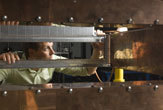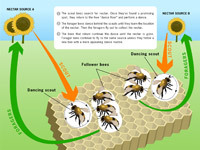This
Behind the Scenes article was provided to LiveScience in partnership with the National Science Foundation.
The strong nuclear force is the strongest of the four fundamental forces of nature, binding protons and neutrons in the cores of atoms. Yet the same force prevents those fundamental particles from combining in certain combinations.
When I first learned that, my entire view of the physical world was shaken. It was like learning that only certain mixes of peanut butter and jelly could be put into a sandwich.
As a journalist at the National Superconducting Cyclotron Laboratory (NSCL) at Michigan State University, one of the nation's top nuclear science laboratories, the strangeness of this truth was my first glimpse into the peculiar nature of matter at the subatomic level.

|
| ©NSCL
|
| Matt Johnson, NSCL staff engineer, inspects a 45-degree dipole magnet. The magnet, used to turn and separate nuclei, was installed in 2007, enabling researchers to continue pursuing exotic nuclei at the edge of existence.
|

